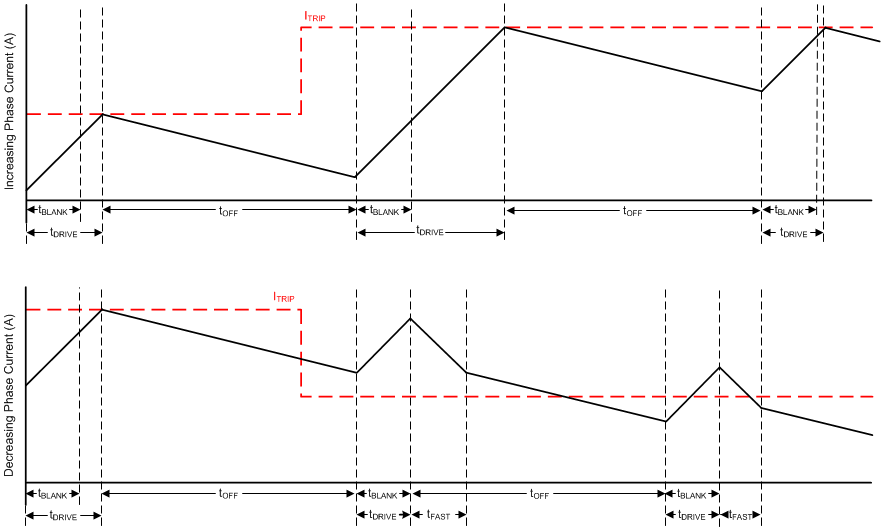JAJSM96 may 2023 DRV8849
PRODUCTION DATA
- 1
- 1 特長
- 2 アプリケーション
- 3 概要
- 4 Revision History
- 5 Device Comparison
- 6 Pin Configuration and Functions
- 7 Specifications
-
8 Detailed Description
- 8.1 Overview
- 8.2 Functional Block Diagram
- 8.3 Feature Description
- 8.4 Device Functional Modes
- 9 Application and Implementation
- 10Layout
- 11デバイスおよびドキュメントのサポート
- 12Mechanical, Packaging, and Orderable Information
8.3.4.2 Smart tune Dynamic Decay
 Figure 8-8 Smart tune Dynamic Decay Mode
Figure 8-8 Smart tune Dynamic Decay ModeUnlike smart tune Ripple Control, smart tune Dynamic Decay operates with fixed OFF time. Smart tune Dynamic Decay dynamically adjusts the fast decay percentage of the total mixed decay time. This eliminates the need for motor decay tuning by automatically determining the best mixed decay setting that results in the lowest ripple and best performance for the motor.
The fast decay percentage is optimized iteratively each PWM cycle. If the motor current overshoots the target ITRIP level, then the mixed decay mode becomes more aggressive (by increasing fast decay percentage) on the next cycle to prevent loss of current regulation. If a long drive time must occur to reach the target ITRIP level, the decay mode becomes less aggressive (by reducing fast decay percentage) on the next cycle to operate with less ripple. On falling steps, smart tune Dynamic Decay automatically switches to fast decay to reach the next step quickly. Smart tune Dynamic Decay operates with fixed 8 μs, 16 μs or 32 μs OFF time.
Smart tune Dynamic Decay is optimal for applications that require minimal current ripple but want to maintain a fixed frequency in the current regulation scheme.